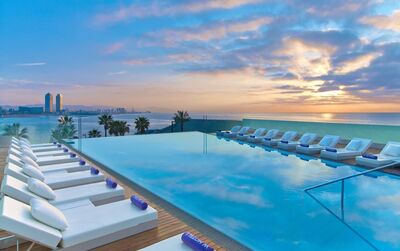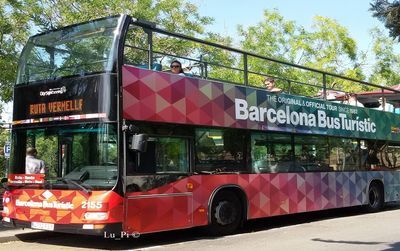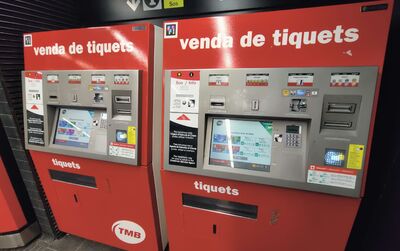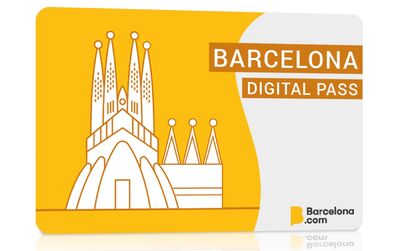El Raval
Practical information about El Raval
The El Raval district is located in Ciutat Vella (the old city) in Barcelona, Spain. It is bordered by the Gothic, Sant Antoni and Poble Sec districts. It is bounded on the east by La Rambla, on the north by Pelai street, on the west: the ronda de Sant Pau and on the south: the avenue del Paral-lel, which marks the border with the Poble Sec neighborhood.
The different options to get to El Raval by public transport:
Métro: You can take the metro lines L2 or L3 to the Paral-lel station. From there you can walk to El Raval.
Bus: Buses 20, 36, 57, 64, 91 and 120 also serve the El Raval neighborhood. You can take one of these buses and get off at the stop closest to your destination.
Hop-on hop-off Bus: The red line takes you to Plaça de Catalunya, the World Trade Center or the foot of the Columbus Column. The closest stop to the Raval with the blue line is Plaça de Catalunya.
Map of El Raval
El Raval (the former Barrio Chino) is a neighborhood that has been almost completely transformed. It used to be a den of artists, intellectuals, transvestites and prostitutes. There is still an air of bohemia, but modernity has taken hold. Today, the Raval district is home to a very large contemporary art museum, art galleries, boutiques and trendy restaurants.
Our advice: Ideally located in the center of Barcelona, El Raval has many hotels:
>> Your hotel close to the Macba in El Raval
History of El Raval over the centuries
In the Middle Ages, El Raval was a neighborhood located outside the city walls of Barcelona. It was populated mainly by artisans and workers. During this period, the neighborhood grew rapidly with the arrival of new residents from the surrounding rural areas.
In the 18th century, the neighborhood began to deteriorate due to the increasing poverty of its inhabitants. However, at the beginning of the 19th century, the construction of the Rambla brought a new economic impetus to El Raval, with the installation of many shops and leisure establishments.
In the twentieth century, the neighborhood of El Raval experienced a strong growth in population due to immigration. However, the neighborhood was also affected by poverty, crime and prostitution.
In recent decades, the city of Barcelona has carried out a series of urban renewal projects aimed at revitalizing El Raval. These projects have included the construction of new buildings, the restoration of historic buildings and the creation of public spaces.
Today, El Raval is a lively and cosmopolitan area of Barcelona that is appreciated by locals and visitors alike for its cultural activities and good atmosphere. It is considered one of the most multicultural neighborhoods in the Catalan capital.
El Raval formerly Barrio Chino
El Raval, formerly known as Barrio Chino, was commonly referred to as the "Chinese Quarter" in the 1920s until the 1980s. This name had nothing to do with the presence of the Chinese community, which was then very limited in Catalonia. In reality, the neighborhood was designated this way because of the presence of numerous establishments for prostitution, gambling, drugs, and organized crime.
The neighborhood was then considered a dangerous and notorious place. In the 1980s, the term "Barrio Chino" became pejorative and began to be replaced by the name "El Raval" at the same time as a long series of urban changes transformed its appearance.
The Bohemian Period of El Raval
The El Raval neighborhood has had several literary and bohemian periods throughout its history. One of the most famous is that of the early twentieth century, known as the "renaixença." The most well-known writers of this time include Jacint Verdaguer, Mercè Rodoreda, and Josep Pla. In the 1960s and 1970s, El Raval became a hub of counterculture and bohemianism. The neighborhood was then inhabited by many artists, musicians, and writers, including poet Joan Brossa, musician and composer Carles Santos, and writers Manuel Vázquez Montalbán, Terenci Moix, and filmmaker Joaquim Jordà i Català.
More recently, El Raval has become a center for contemporary and alternative arts, housing numerous museums, art galleries, and exhibition spaces, as well as art and music festivals throughout the year.
Some Ideas for Visiting the El Raval Neighborhood
More places to discover:
>>Take advantage of our good addresses such as restaurants and shops.
1- Guëll's Palace*
2- Monasteri Sant Pau del Camp**
3- Barcelona contemporary Art Museum (MACBA) ***
4- Barcelona contemporary culture centre (CCCB)**
5- Boqueria Market ***








2 comments
hospital de la creu - Marito (16 May 2016 - 11:46)
Yo también opino que las fotos no representan el antigüo hostipal de la creu!
la foto del Hospital de Sant Pau - Tana (22 Apr 2011 - 09:00)
Hola, La imagen escogida para el Hospital de Sant Pau del Raval no corresponde al edificio gótico. Me parece que se trata del Hospital modernista de Domenech i Montaner.